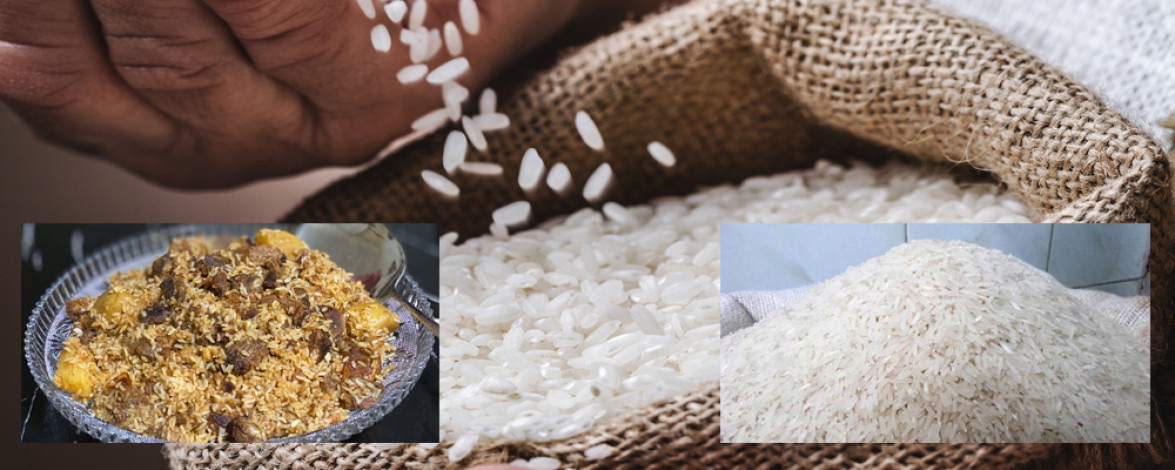
File Photo
Methane is the most powerful greenhouse gas, quietly baking the planet and responsible for about 30% of global warming. Huge amounts are being poured from farms, landfills, and fossil fuel infrastructure. Rice is a significant source of methane emissions from rice agriculture. Rice produces 12% of global methane emissions and accounts for a staggering 2.5% of all GHG emissions, due to its anaerobic decomposition during its production process.
Rice feeds the world's population every day, but a lesser-known fact is that rice is one of the major contributors to global warming and also a victim of climate change. This is why 48% of countries have included rice in their agricultural Nationally Determined Contributions (NDCs) strategies to effectively address climate change. And so, the question arises: Can we produce rice in a better way?
Rice is a vital crop that feeds 3.5 billion people worldwide. It provides 20% of the world's calories, a staple of kitchens in various countries. It was domesticated and fed hungry civilizations on three continents across Asia, Africa, and South America for thousands of years.
Crops grow better in wet soil than dry soil, and once farmers found that flooding the fields killed the weeds, but the rice survived, rice fields were kept inundated for months.
When bacteria in the soil break down dead plants, they usually release carbon dioxide. But in a flooded field where air can't get in, there's less oxygen to react with the carbon in the organic waste. That encourages the growth of bacteria that make a gas called methane instead. Methane doesn't last as long in the air as CO2, but it heats the planet 80 times more over a 20-year period.
Furthermore, the nitrogen in the fertilizer means paddies spew out nitrous oxide, which is 270 times more potent than CO2. At emissions per kilogram, rice is not as bad as the same amount of eggs, cheese, or meat, but it's worse than other carbs. With total emissions, it's an entirely different story. We eat so much rice that it heats the planet more than everything but the cattle industry. Fixing the rice production process could save a ton of pollution.
The obvious solution is to drain fields, so bacteria don't make more methane. Across East Asia, farmers have drained their paddies in the middle of the growing season to save water. As water has grown even scarcer, others are piloting alternative techniques like “alternate wetting and drying water management”, which doesn't remove all flooding, but could reduce 30 percent of water use and cut GHG emissions by 90 percent, while boosting yield.
In principle, it's a simple technology and requires no special machinery. This simple trick has halved methane emissions on some farms and saved increasingly scarce water.
Intermittent flooding is significant for growing crops efficiently and reducing emissions. Still, the rigid policies and reluctance of farmers are the primary reasons it isn't happening. In Bangladesh, a recent study found that alternate wetting and drying have failed to take off because farmers don't receive either economic incentives to reduce or suffer no penalty to increase water use. They see little benefit from using less because they receive free water or subsidized electricity which allows pumping water from deep in the ground.
The second problem is nitrogen. Fields where the water content varies over the season, produce more nitrous oxide. Wetting and drying create cracks in the soil that let in oxygen, which reacts with nitrogen to form nitrous oxide. Using less fertilizer can help avoid this, but scientists are still trying to work out how to stop it entirely.
The third problem is the yield if the soil gets too dry. One review found that yields fell 5% in fields repeatedly drained and flooded. This can be life-changing for farmers. A simple way to fix this is by sparingly wetting and drying fields.
The hundreds of millions of tons of farm waste is another issue. How farmers usually deal with it is toxic for people and the planet. There are only a few valuable things to do with rice straw, like turning it into animal feed. Innovation is needed to produce bio-energy or valuable products such as organic fertilizer that can be used on the farm itself.
Changing people's behaviour is tough, and few governments even seem to be trying. A more radical idea to grow less rice is to swap it for cleaner and sturdier crops, like potatoes. This might sound absurd, but there are reasons governments in Asia might want to encourage other crops. In 2015 China launched a national strategy to make potatoes a staple crop to improve the country's food security and cut GHG emissions.
Methane is way more substantial in the short term. If we can reduce methane emissions by about 45% in the next 10 years, we can shave off almost 0.3C of warming during the next 2-3 decades. To make the global food system more secure in the face of increasingly extreme weather, we need to work out an efficient and sustainable rice production system to keep the planet from heating, save dwindling water supplies, and cut air pollution.
Unlike meat or dairy, there's no big rice industry lobbying against change and holding back progress. The challenge instead is to change the habits and traditions of farmers worldwide -- who can afford neither lower yields nor more extreme weather. Governments must put policies in the right direction and shift incentives, and invest in growing our crops as a nation more effectively and efficiently. Because climate change is affecting everything, mitigation of agricultural GHG should be our priority.
Source:
Online/KSU
Comment Now